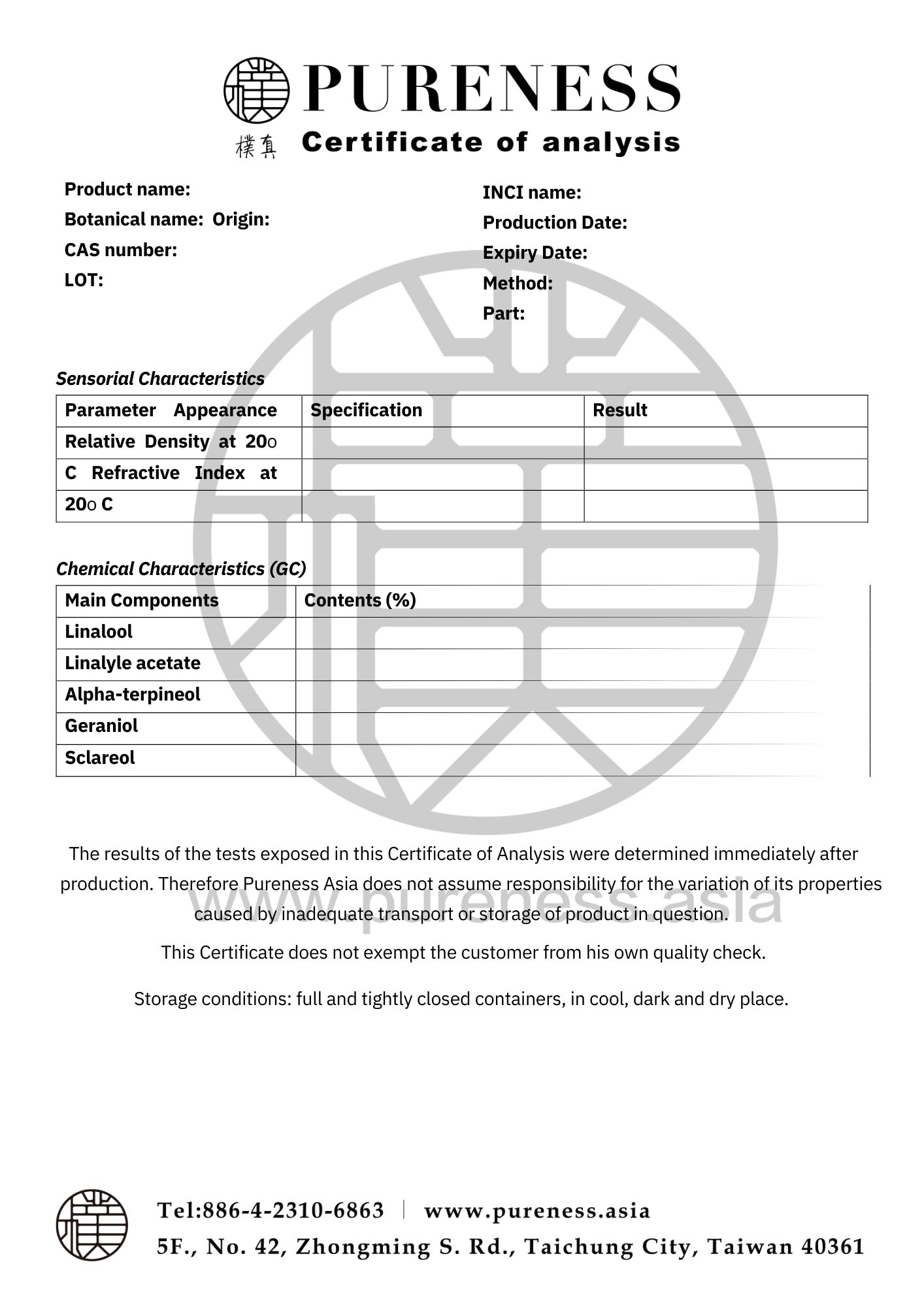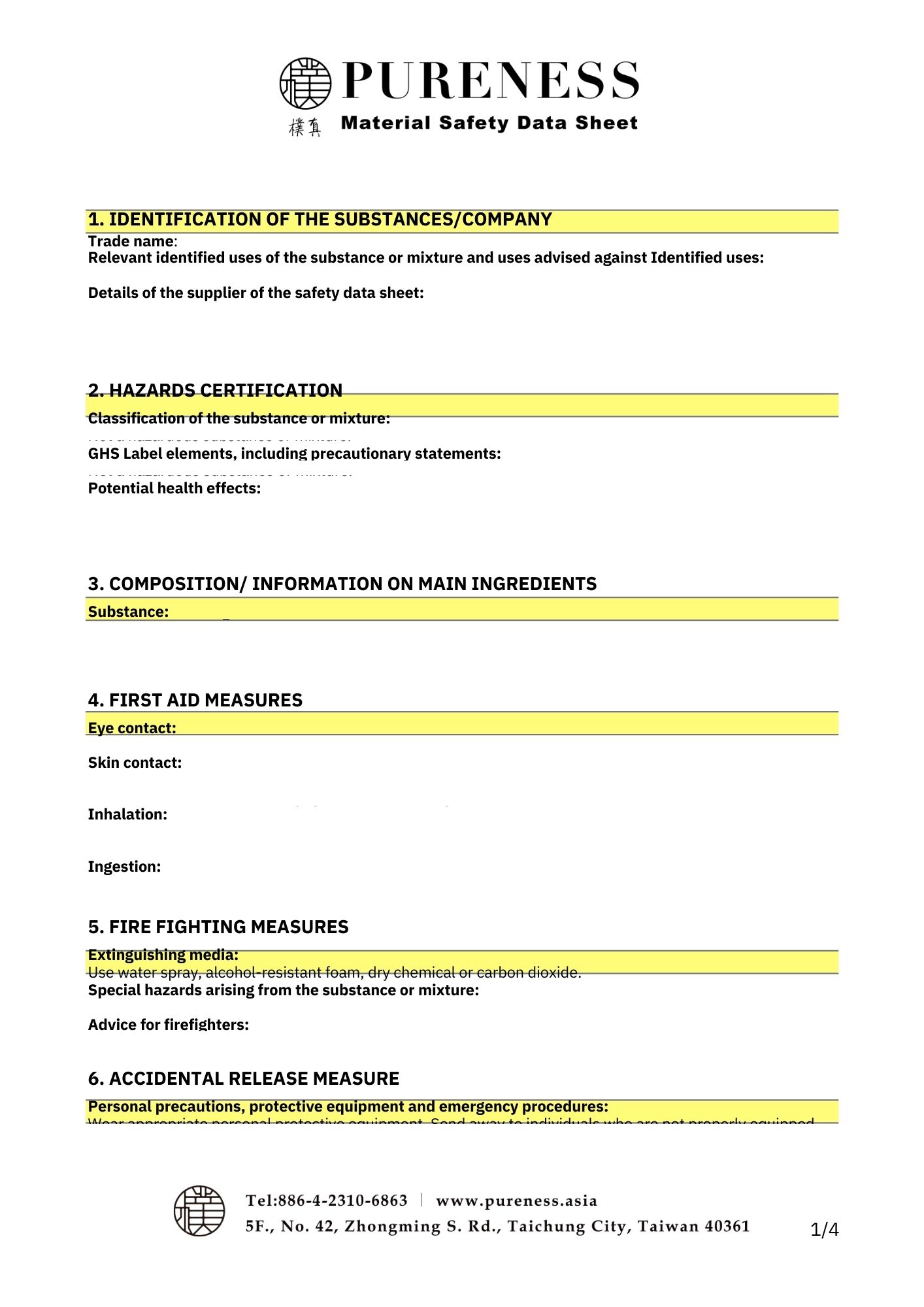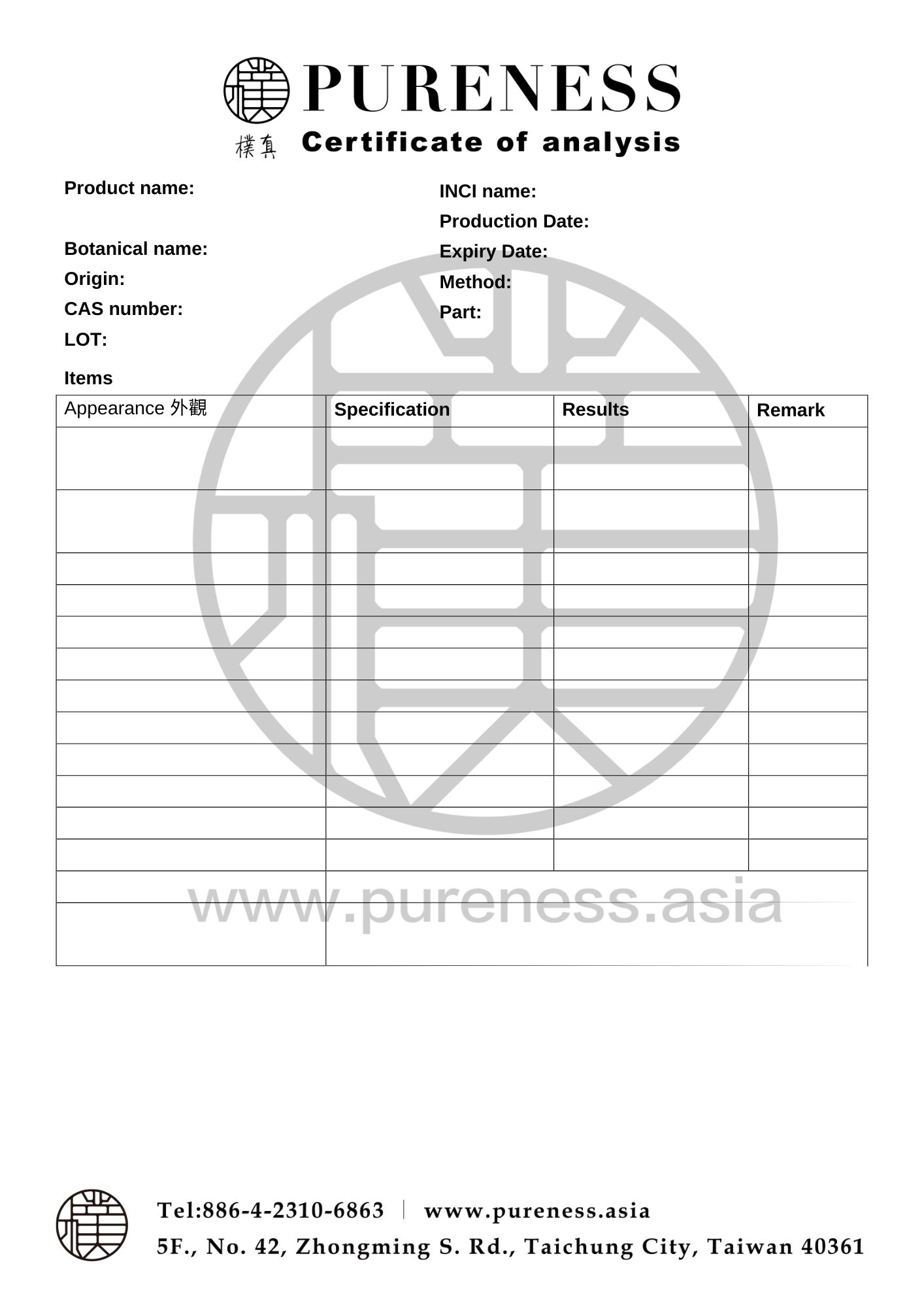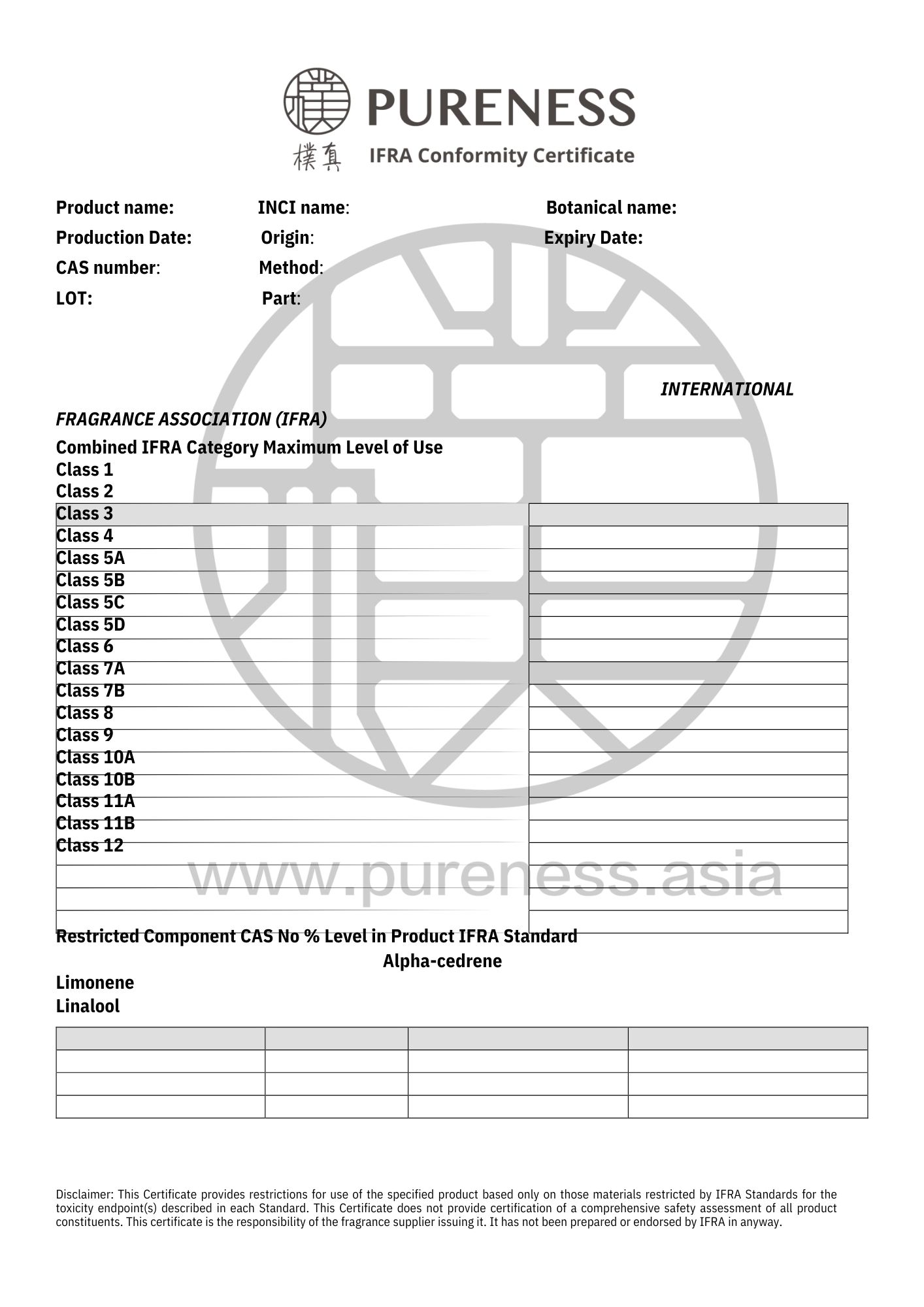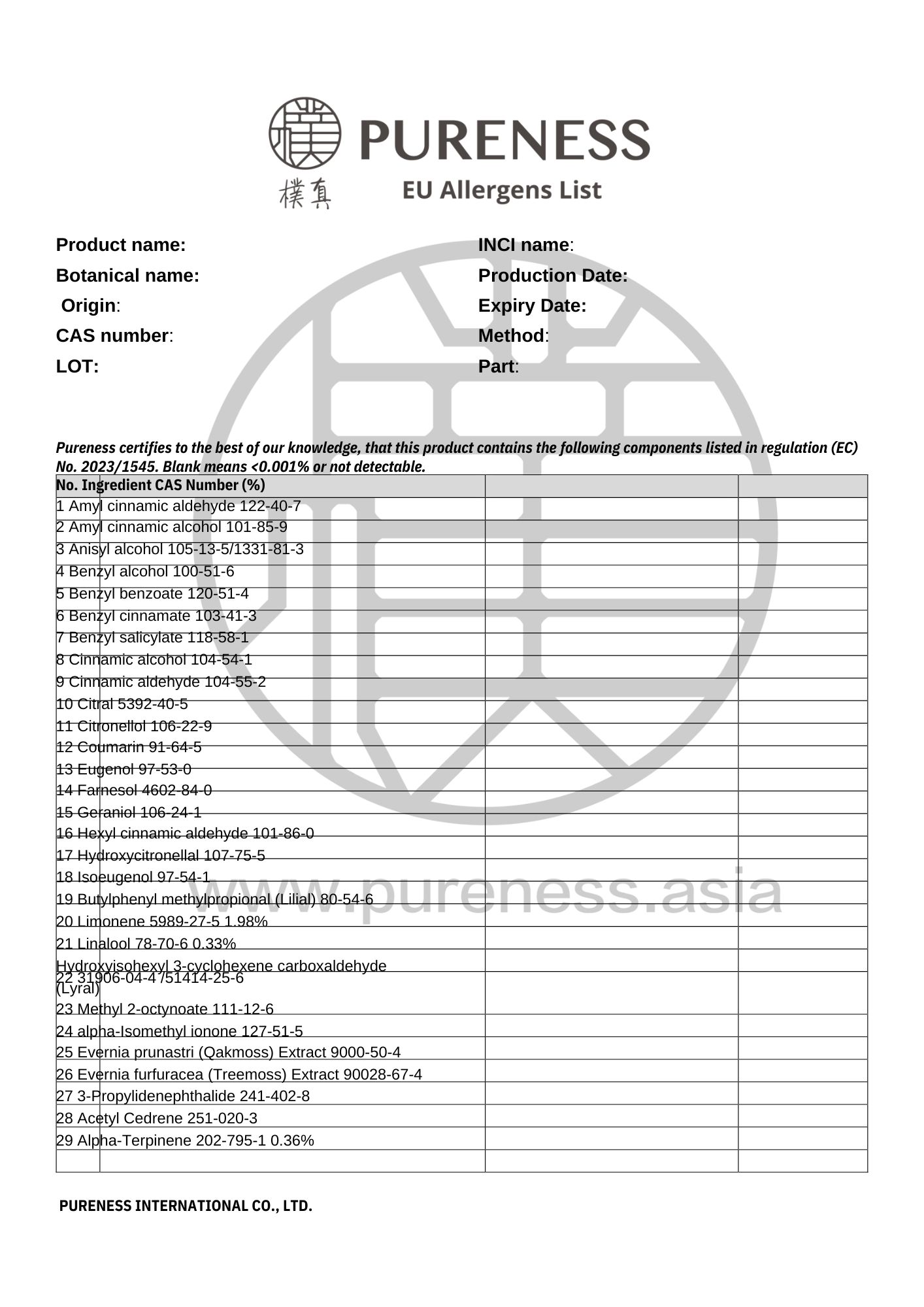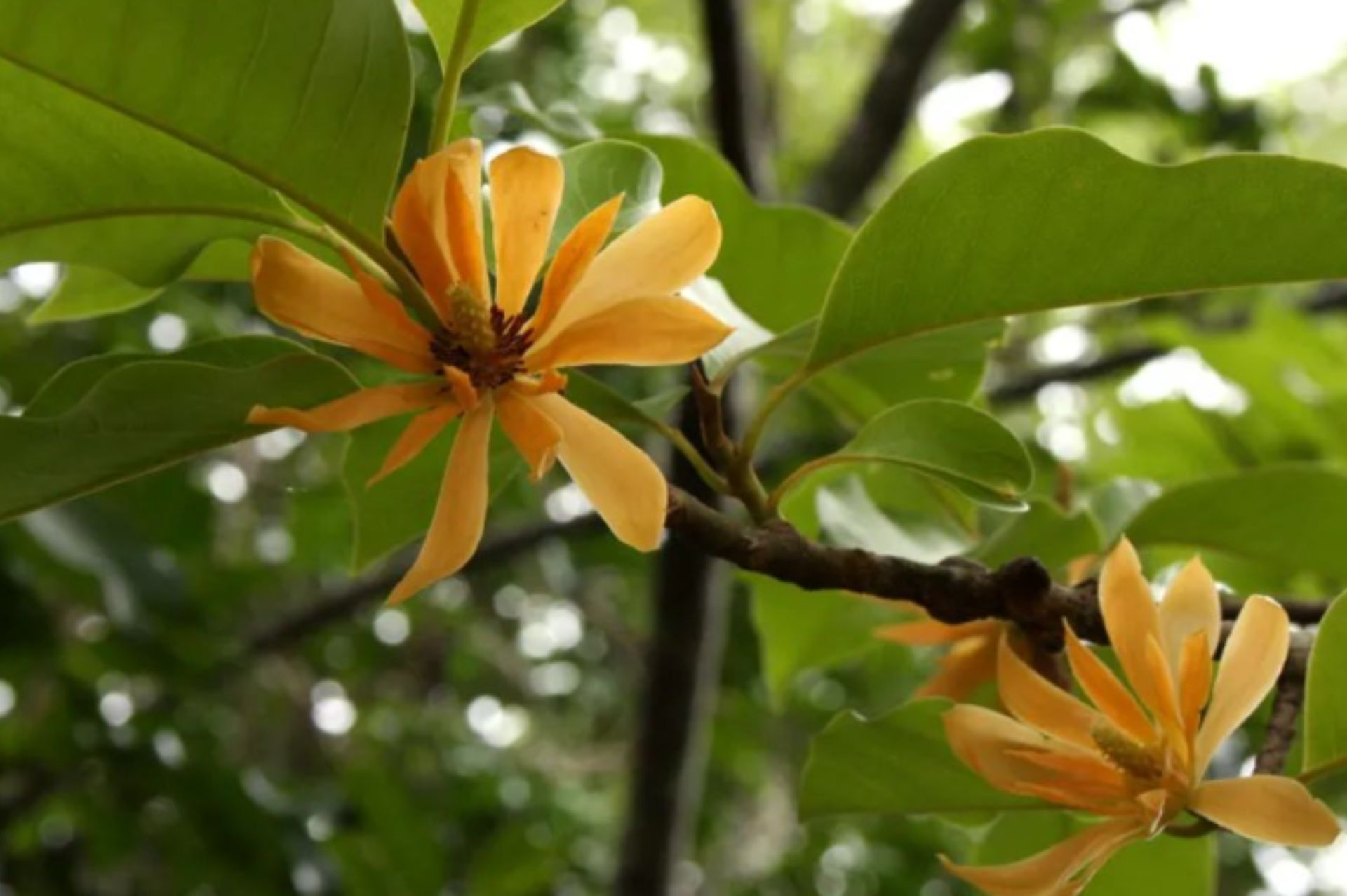
Champaca
Scientific name|Michelia Champaca
Origin|India
Classification|Flower series
Specifications|500g-25kg Please contact sales for details
Extraction part|Flower
Extraction method | Abs.
Plant family|Magnoliaceae
Aroma|Rich and warm floral scent that gently soothes the mind
▎Essential Oil Introduction
In India, Champaca is considered an ancient sacred plant, with its Latin name derived from Sanskrit. Its growth pattern is free and unrestrained, and its petals resemble a snake's head, hence the Sanskrit name "Nag Champa," meaning snake god. Champaca is a tall evergreen tree, often reaching up to 30 meters, also known as Yellow Champaca. It is native to the temperate regions of the Himalayas and is primarily found in subtropical and tropical countries such as India, southern China, Indonesia, the Philippines, and some Pacific islands.
The flowering season mainly occurs during the monsoon (June to September) and spring (January to April). During this time, the tree is covered with thousands of golden-yellow flowers that exude a rich fragrance. Most of the flowers are used for decorative purposes and in temple offerings. Ancient Indian scriptures note that even if a Champaca blooms in a remote corner of Mumbai, its warmth can be felt by a beggar on the other side of the city.
The intense scent of Champaca is preserved through solvent extraction, capturing the full essence of the flower. Its deep floral notes help evoke tender emotions of purity, increase trust in others, open the heart to giving and receiving love, and provide comfort during times of separation. In perfumery, just a small amount of absolute is needed to achieve a rich floral aroma. In traditional Indian Attar extraction, sandalwood is used as a fixative alongside Champaca, resulting in a uniquely healing fragrance.
▎Component Analysis
|Main Component: Phenyl esters
The primary component is phenylethanol, with additional compounds including methyl benzoate, phenylacetonitrile, α and β-ionone, methyl anthranilate, indole, and methyl linoleate.
|Research Validation
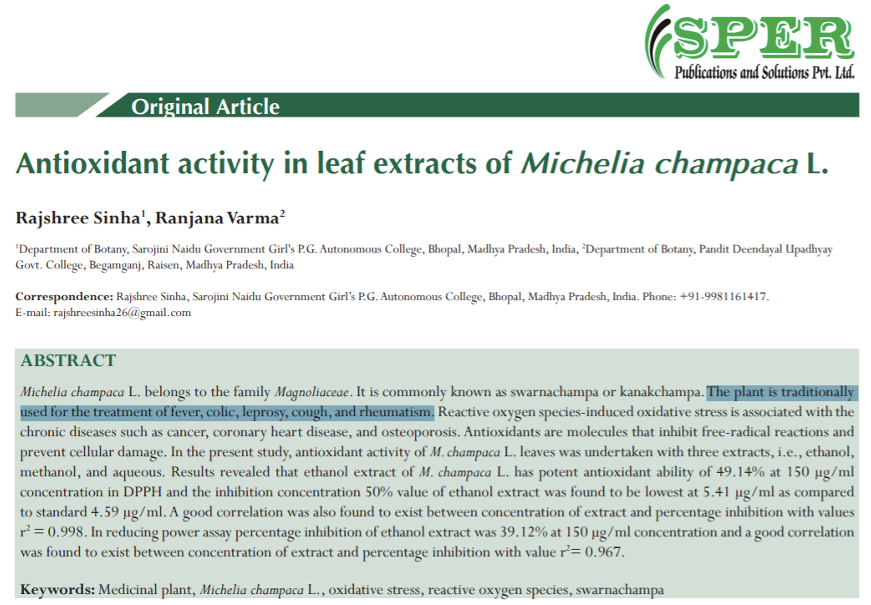
▸ The entire Champaca plant has medicinal properties. In traditional medicine, it has been studied for its potential benefits in treating fever, colic, leprosy, cough, and rheumatism.
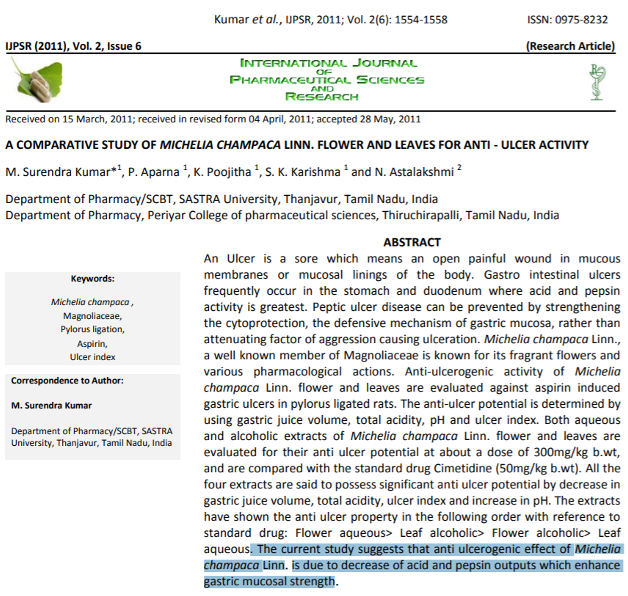
▸ Champaca has been studied for its effects on the secretion of gastric acid and pepsin, as well as for its ability to strengthen the gastric mucosa.
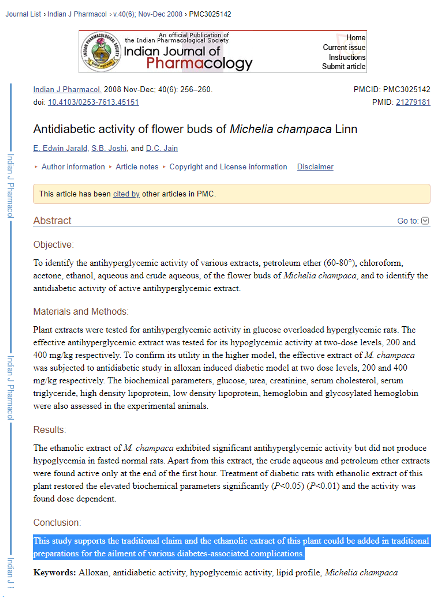
▸ Ethanol extracts from Champaca flowers have been studied for their effects on blood sugar, diabetes, and related complications.
|Raw Material Certifications
To obtain relevant certification information, please contact us on WhatsApp.
▎References
- 沈莉莎、李嘉菱, 中医芳疗百科, 新北市: 出色文化, 2019.
- R. Kaiser, "New volatile constituents of the flower concrete of Michelia champaca L.," Journal of Essential Oil Research, vol. 3, no. 3, pp. 129-146, 1991.
- P. K. S. N. a. Y. R. R. Rout, "Liquid CO2 extraction of flowers and fractionation of floral concrete of Michelia champaca Linn.," The Journal of Supercritical Fluids, vol. 3, no. 56, pp. 249-252, 2011.
- Kumar, R. Vivek, et al., "Antioxidant and antimicrobial activities of various extracts of Michelia champaca Linn flowers.," World Applied Sciences Journal, vol. 4, no. 12, pp. 413-418, 2011.
- Shanbhag, Tara, et al., "Effect of Michelia champaca linn flowers on burn wound healing in wistar rats.," International Journal of Pharmaceutical Sciences Review and Research, vol. 2, no. 7, pp. 112-115 , 2011.
- Kumar, M. Surendra, et al., "A Comparative study of Michelia champaca Linn. Flower and leaves for anti-ulcer activity.," International Journal of Pharmaceutical Sciences and Research, vol. 6, no. 2, p . 1554, 2011.
- 小也江里子, 精油芳疗教科书, 台北市: 邦联文化事业有限公司, 2019.
- 温佑君, 新精油图鉴:300种精油科研新知集成, 台北市: 商周出版, 2018.
- R. v. Braunschweig, 植物油全书, 台北市: 商周出版, 2009.
- R. a. R. V. Sinha, "Antioxidant activity in leaf extracts of Michelia champaca L.," Journal of Advanced Pharmacy Education & Research, vol. 2, no. 7, 2017.
- E. E. S. B. J. a. D. C. J. Jarald, "Antidiabetic activity of flower buds of Michelia champaca Linn.," Indian Journal of Pharmacology, vol. 6, no. 40, p. 256, 2008.
|Some images sourced from the internet. Contact for copyright removal|
